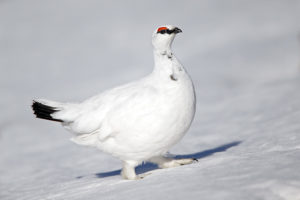Adaptation of Animals to Different Climates
Climate differs from place to place. That is why, animals have special characteristics that enable them to live in a particular climate. These special characteristics are called adaptations. Adaptations can be defined as changes in the structure or behaviour of an organism that allow it to survive in a particular habitat.
Migration
Migration is an interesting activity depicted by certain birds and animals. It involves mass movement of birds and animals from one place to another in response to a seasonal change. They migrate to avoid unfavourable conditions of food availability and temperature. They come back to their native place once favourable conditions return. Some birds even migrate just to lay eggs.
Hot and Dry (Desert-like) Climates
In hot and dry climates, water is scarce, and animals need adaptations to conserve water. Here, most animals can get water from the plants they eat, particularly succulent (fleshy and juicy) ones such as cactus. Some animals also get water from fluids of the bodies of animals they eat. Let us look at some animals and the ways they adapt to the hot and dry climate.
Camels
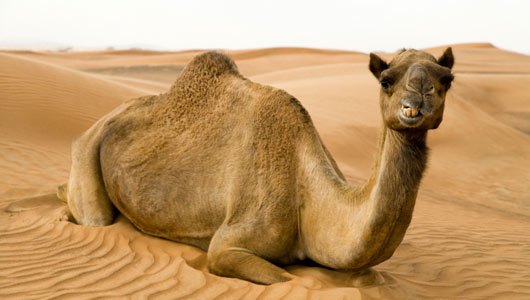
- Camels have long eyelashes, ear hair, and nostrils that they can close, to keep the sand out when the wind blows.
- They have thick eyebrows that provide shade from the bright Sun.
- Their wide feet help them to walk on sand without sinking into it.
- The hump of a camel is a reservoir of fatty tissue. A camel can go a week or more without water, and it can last for several months without food.
- Camels have thick lips which help them to feed on prickly desert plants without hurting themselves.
- Unlike most mammals, a camel can withstand body temperature changes throughout the day frorp 34°C to 41.7°C (93°F-107°F). This allows the camel to conserve water by not sweating as the environmental temperature rises.
Reptiles and birds excrete metabolic wastes in the form of uric acid, an insoluble white compound, wasting very little water in the process.
Kangaroo rats live in burrows which they seal off to block out midday heat and to recycle the moisture from their own breathing. They are active only during the morning and evening to escape the scorching heat. The amazing fact about these animals is that they do not drink water. They get all their requirements by digesting dry seeds. Various species of desert-dwelling ground squirrels and toads remain dormant sleeping away the hottest part of the summer.

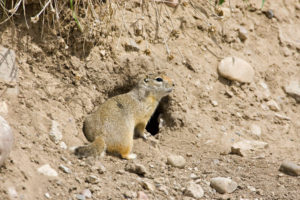
Fennecs are nocturnal in nature, only searching for food at night when it is less hot. During the day, the fennec keeps to its den with other foxes. Its long ears help it to dissipate heat.

Hot Tropical and Temperate Climates
It is hot and humid in the tropics and quite warm in the temperate regions. Hence, animals found in the tropics have adaptations mainly for regulating temperature and for faster evaporation of water, so that it does not get too sticky and uncomfortable. Evaporation of water from the body leaves a cooling effect. These animals induce a faster evaporation by active sweating, panting, and licking. Just as in hot desert climates, animals here too are more active during early mornings, evenings, or nights. Gorillas, monkeys, jaguars, sloths, and colourful birds such as macaws can be found in this region.
Animals found in the tropics usually have long legs and tails. Many animals here have very large ears.
Flapping of these huge ears helps blow air that cools the blood and that, in turn, cools the body. Now you know why African elephants have such huge ears.
These ears work like fans.
Leaf insects and stick insects are shaped or coloured to match their surroundings. This makes them harder to spot.
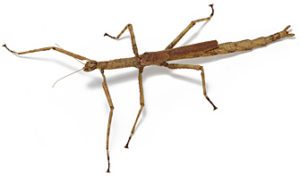
As there are many types of animals in this region, the competition for food is intense. Many animals have adapted by learning to eat food which is rarely eaten by others thus reducing competition. Several animals, like monkeys, live on trees. This keeps them safe from the predators which live on the ground.
Extremely Cold Climates
Animals that live in cold areas usually have adaptations to keep their bodies warm by layers of fat deposits. They take on the temperature of the water, which is usually stable. Some large fish and mammals keep their bodies warm by excessive muscular activity and thick, waterproof fur.
Polar bears

- Polar bears and many other animals, such as seals, whales, and walruses, have a thick layer of fat called blubber under their skins, which keeps their bodies warm and insulated from the cold.
- The white fur of the polar bear acts as a good insulator against the cold. It further helps the animal to camouflage itself from its prey thus enabling it to hunt well both on land and in the water.
- Female polar bears dig dens in the snow where they might hibernate, i.e., remain inactive or dormant, during the worst part of the winter. This allows them to survive without food or water during the cold winter season. The fat stores of the body get converted into energy for the body to function during hibernation. The cubs are born in the den.
Penguins huddle together in groups to stay warm and fight their enemies. The male penguins huddle together to protect the eggs laid by the female from the severe cold.
If exposed to the cold, the eggs get destroyed. The female penguins then return to the sea to feed themselves and bring food for their chicks.
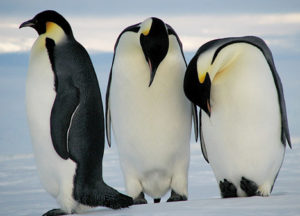
Arcticfox, the Canadian lynx, and the Arctic hare are usually much larger than members of the same species living in warmer climates. They have large furry paws and furry ears. The furry paws act as snow shoes and help them to move in the snow easily. The furry ears help to keep the cold out.
Arctic birds such as the ptarmigans have feathers up to their feet, to keep their bodies warm. These ptarmigans stay in the Arctic all year whereas some birds such as snow geese and Arctic terns migrate to warmer regions during the winter and return only after summer begins to settle in.
